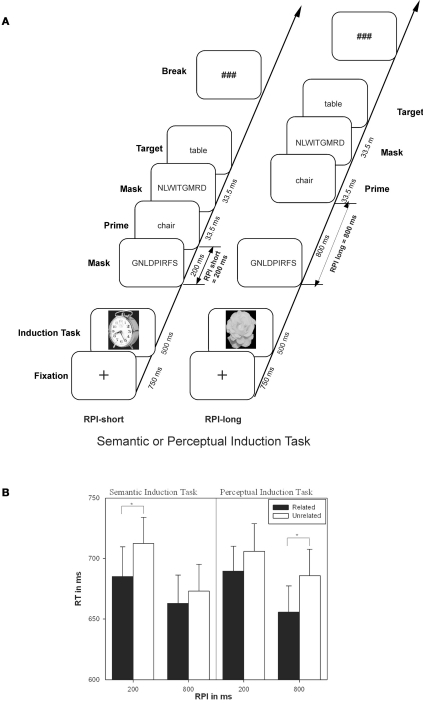Figure 2.
(A) Induction task paradigm in combination with a masked semantic priming task. The masked prime word was presented either 200 ms or 800 ms following the response to the induction task (RPI). The semantic induction task required semantic classification (living/non-living decision) of the pictured object, whereas the perceptual induction task required a perceptual classification of the object (round/elongated shape). Subsequent to masked prime presentation, the target word was presented, which required a lexical decision (word/pseudoword). In the related priming condition, prime and target were semantically related (“table-chair”) whereas in the unrelated condition, prime and target were semantically unrelated (“hen-car”). (B) Behavioral semantic priming effects of Exp. 1 of the Martens et al. (2011) study. Mean correct response times and their standard error in the lexical decision task, as a function of semantic relatedness, induction task, and RPI. The asterisks indicate significant masked priming effects (difference between semantically unrelated and related conditions) within each induction task/RPI combination. At the short RPI when the task sets were active, significant unconscious semantic priming effects were only obtained following the semantic induction task, but not following the perceptual induction task. At the long RPI when the task sets were inhibited, the opposite pattern was observed: unconscious semantic priming effects were only obtained following the perceptual induction task Modified after Kiefer and Martens (2010) and after Martens et al. (2011).

